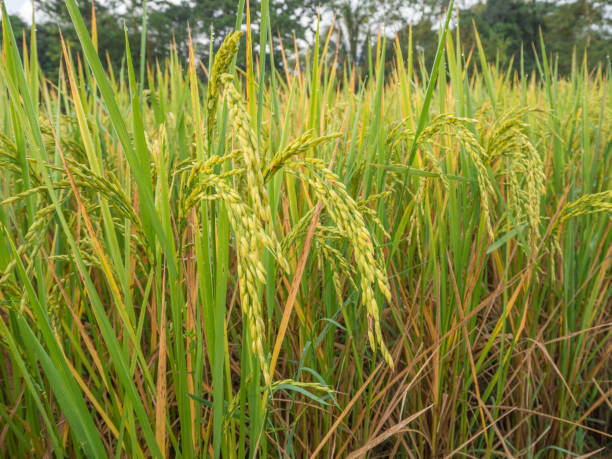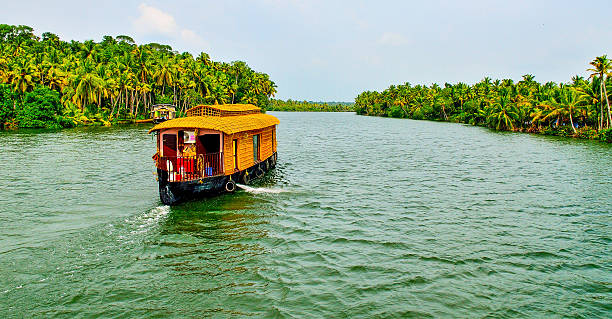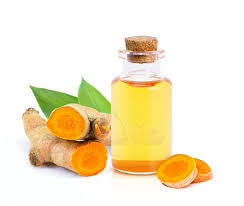
by Rajiv012 | Jun 10, 2025 | Travel
Traveling is one of life’s most enriching experiences. Whether you’re planning a weekend getaway, a luxury honeymoon, or an international family trip, the planning process can be overwhelming. That’s where the expertise of a professional travel agent in Delhi becomes invaluable. With their in-depth knowledge, access to exclusive deals, and personalized services, a travel agent can turn your dream vacation into reality—without the stress.
Why Choose a Travel Agent?
In the digital age, many travelers rely on online platforms to book trips. However, nothing can replace the expertise and personalized service that a travel agent provides. A skilled travel agent in Delhi brings years of experience, local insights, and a network of industry connections to offer tailor-made travel solutions.
While online bookings can be convenient, they often lack the human touch, flexibility, and real-time support. A travel agent not only helps you design the perfect itinerary but also assists in resolving issues such as flight cancellations, overbooked hotels, or sudden travel restrictions. Their involvement ensures that you enjoy a smooth and stress-free journey from start to finish.
Benefits of Hiring a Travel Agent in Delhi
1. Expert Destination Knowledge
Whether you’re exploring the snowy landscapes of Switzerland or the spiritual sites of Varanasi, a travel agent in Delhi has access to valuable destination information. They guide you on the best time to visit, top attractions, hidden gems, and local customs, ensuring you experience the true essence of the destination.
2. Customized Travel Plans
One of the standout benefits of working with a travel agent is personalized service. Instead of offering generic packages, they understand your travel preferences, interests, and budget to create a custom itinerary tailored just for you.
3. Cost-Efficient Travel
Contrary to popular belief, hiring a travel agent doesn’t necessarily mean spending more. In fact, a travel agent in Delhi can help you save money by offering access to exclusive deals, discounts, and package upgrades. Their partnerships with hotels, airlines, and tour providers often result in better prices than what’s available online.
4. Visa and Documentation Support
Planning an international trip? Navigating the visa process can be daunting. Travel agents assist with visa applications, documentation, and embassy appointments, reducing the chances of delays or denials.
5. Emergency Assistance
Unexpected issues can arise during travel—be it medical emergencies, natural disasters, or sudden itinerary changes. A travel agent provides 24/7 support, acting as your point of contact to swiftly resolve any situation, ensuring minimal disruption to your plans.
Services Offered by a Travel Agent in Delhi
Delhi, being a bustling metro and a major travel hub, is home to numerous experienced and reputed travel agents. They offer a wide range of services, including:
-
Domestic and International Tour Packages
-
Air, Rail, and Bus Ticket Bookings
-
Hotel Reservations and Resort Bookings
-
Visa Assistance and Travel Insurance
-
Airport Transfers and Local Transport
-
Group Tours and Corporate Travel Solutions
-
Cruise Bookings and Luxury Holidays
-
Pilgrimage and Heritage Tours
Whether you want to trek in Himachal, explore Rajasthan’s palaces, or travel abroad for a business conference, a Delhi-based travel agent ensures everything is meticulously planned and professionally managed.
How to Choose the Right Travel Agent in Delhi
With so many options available, selecting the right travel agent in Delhi can be challenging. Here are some tips to help you find a reliable one:
-
Check Online Reviews: Platforms like Google, Justdial, and TripAdvisor are great places to read customer feedback and ratings.
-
Verify Experience: Choose agents who have been in the industry for a while and have expertise in your desired destination or travel type.
-
Ask for Certifications: Agents affiliated with IATA, TAAI, or other professional bodies follow high standards of service.
-
Compare Packages: Get quotes from multiple agents and compare not just the price but also the services included.
-
Meet in Person: If possible, visit the office or schedule a call to discuss your trip. This helps you gauge their professionalism and clarity.
Travel Trends Managed by Travel Agents
Travel needs are evolving. Today’s travelers seek more than just sightseeing—they want experiences. A seasoned travel agent in Delhi stays up-to-date with current travel trends and curates journeys accordingly:
-
Wellness Retreats
-
Sustainable and Eco-Tourism
-
Adventure and Wildlife Safaris
-
Cultural and Culinary Tours
-
Digital Detox and Offbeat Travel
By understanding these preferences, travel agents create meaningful itineraries that match your lifestyle and goals.
Why Delhi Is the Ideal Place to Start Your Journey
Delhi is not only the capital of India but also a gateway to countless travel destinations, both domestic and international. With direct flights to most global cities and excellent connectivity across the country, it’s the perfect launchpad for any trip. A travel agent in Delhi has access to the best travel options, thanks to the city’s prominence in tourism and hospitality.
From planning a budget-friendly trip to Rishikesh to organizing a luxury cruise in Europe, agents based in Delhi have the experience and resources to plan it all.
Final Thoughts
Planning a trip doesn’t have to be stressful or time-consuming. With the right travel agent in Delhi by your side, your holiday can be everything you dreamed of and more. From customized itineraries to round-the-clock support, a travel agent adds value at every step of the journey.
So the next time you’re planning to pack your bags, skip the endless online searches and let a seasoned travel professional in Delhi handle the details. You’ll not only save time and money but also gain peace of mind—knowing that your perfect vacation is in expert hands.

by Rajiv012 | Jun 10, 2025 | Uncategorized
Crop yield is a critical measure of agricultural productivity. It refers to the amount of crop harvested per unit of land area and plays a key role in determining farm profitability, food supply, and overall agricultural sustainability. As global food demand continues to rise due to population growth, improving crop yield has become a top priority for farmers, agronomists, and policymakers alike.
In today’s competitive and climate-sensitive agricultural environment, maximizing crop yield requires a combination of traditional wisdom and modern technology. This article explores the key factors affecting crop yield and provides practical strategies for improving it.
Understanding Crop Yield
Crop yield is typically measured in kilograms per hectare (kg/ha) or bushels per acre and depends on various factors including crop type, soil condition, weather, and management practices. It is influenced by both genetic potential and environmental conditions.
While a plant variety may have high-yielding potential, that potential can only be realized if the crop is provided with optimal growing conditions and managed properly throughout the growth cycle.
Factors Influencing Crop Yield
Several interrelated factors influence crop yield:
-
Soil Health
Fertile, well-drained soil with proper texture and pH is essential for root development and nutrient uptake. Poor soil conditions often lead to stunted growth and reduced yields.
-
Seed Quality
High-quality seeds with strong germination rates and resistance to pests and diseases can significantly impact yield outcomes.
-
Climate and Weather
Temperature, rainfall, humidity, and sunlight all play critical roles in plant development. Extreme weather events such as droughts or floods can devastate crops.
-
Water Management
Inadequate or excessive irrigation affects nutrient availability and can lead to diseases or poor plant health.
-
Nutrient Management
Balanced fertilization ensures plants get essential macro and micronutrients. Deficiencies or imbalances can limit growth and productivity.
-
Pest and Disease Control
Insect pests, fungi, bacteria, and viruses can destroy crops or reduce their market value if not managed effectively.
-
Crop Rotation and Diversity
Continuous monoculture can deplete soil nutrients and increase pest risks. Rotation helps maintain soil fertility and reduce disease incidence.
Strategies to Improve Crop Yield
To achieve maximum crop yield, farmers must adopt integrated management practices that address the above factors systematically.
1. Soil Testing and Amendment
Regular soil testing helps determine pH levels, organic matter content, and nutrient deficiencies. Based on the results, farmers can apply lime to correct soil acidity or organic matter to enhance soil structure. Proper fertilization, tailored to crop needs, ensures optimal nutrient availability throughout the growing season.
2. Use of Certified Seeds
Investing in high-quality, certified seeds ensures better germination rates and resistance to local pests and diseases. Modern hybrids and genetically improved varieties often outperform traditional varieties in both yield and resilience.
3. Efficient Irrigation Practices
Using irrigation systems like drip or sprinkler irrigation helps apply water directly to the root zone, minimizing wastage and promoting consistent soil moisture levels. Monitoring weather forecasts and using soil moisture sensors can further optimize water use.
4. Integrated Pest Management (IPM)
Instead of relying solely on chemical pesticides, IPM combines cultural practices, biological control, and selective pesticide use to manage pests sustainably. Scouting fields regularly for early pest detection and using natural predators can reduce crop loss significantly.
5. Precision Agriculture
Modern technologies like GPS, drones, and satellite imagery enable precision agriculture. Farmers can analyze field variability, apply inputs accurately, and monitor crop health in real-time, leading to better decision-making and increased crop yield.
6. Timely Planting and Harvesting
Planting crops at the optimal time ensures they benefit from favorable climatic conditions. Delayed planting can expose crops to adverse weather or pest pressures. Similarly, timely harvesting prevents losses due to over-ripening or damage from late-season diseases.
7. Cover Cropping and Mulching
Cover crops like legumes improve soil fertility and suppress weeds, while mulching helps retain soil moisture and regulate temperature. Both practices contribute to healthier soil and higher productivity in the main crop.
8. Training and Education
Farmer training programs on best agronomic practices, climate-smart agriculture, and sustainable input use can empower farmers with the knowledge needed to improve crop yield. Peer learning and extension services also play a vital role.
Role of Government and Technology
Governments can support yield improvement through research and development, subsidies on farm inputs, crop insurance, and access to credit. Digital platforms and mobile applications are increasingly used to provide farmers with real-time advice on weather, pest threats, and nutrient management.
Artificial intelligence and machine learning are now being used to predict yield outcomes, recommend agronomic actions, and optimize input usage based on big data analytics.
Future Outlook
With climate change and population pressures intensifying, the need to improve crop yield sustainably has never been more urgent. Emerging innovations such as vertical farming, hydroponics, and gene editing hold promise for increasing production without expanding farmland.
However, the most immediate gains can still be achieved through better farm-level practices and improved access to information and technology.
Conclusion
Improving crop yield is a multifaceted challenge that demands a combination of traditional knowledge, modern science, and policy support. By focusing on soil health, seed quality, water and nutrient management, and pest control, farmers can significantly enhance productivity and profitability.
In an era where every harvest counts, adopting the right strategies to maximize crop yield is essential—not just for farmers, but for food security and global sustainability.

by Rajiv012 | Jun 10, 2025 | Technology
In today’s fast-paced financial ecosystem, lenders of all sizes—from traditional banks to modern fintech companies—face the challenge of efficiently managing the growing volume of loan applications, repayments, and compliance tasks. To stay competitive and meet rising customer expectations, institutions are increasingly turning to loan management software to automate and simplify their lending operations.
Loan management software is a digital solution designed to handle the entire lifecycle of a loan—from origination and disbursement to repayment tracking, interest calculation, and closure. With the right software in place, lenders can improve accuracy, ensure regulatory compliance, enhance customer service, and scale operations without increasing overhead.
What is Loan Management Software?
Loan management software is an integrated system that streamlines all aspects of loan administration. It helps lenders oversee portfolios, monitor repayments, generate reports, and manage communication with borrowers. Unlike simple spreadsheets or manual systems, a comprehensive loan management platform offers a centralized interface for tracking the status of loans in real-time, automating calculations, and reducing manual intervention.
This type of software is used across various industries and financial segments, including banking, microfinance, peer-to-peer lending, mortgage companies, credit unions, and NBFCs.
Key Features of Loan Management Software
Modern loan management software is packed with features that make lending easier, more accurate, and more transparent. Some of the core functionalities include:
-
Loan Lifecycle Tracking
Manages the complete lifecycle of a loan, from application and approval to repayment and closure.
-
Automated Repayment Scheduling
Automatically calculates installment amounts, interest rates, and due dates based on loan terms.
-
Payment Reminders and Alerts
Sends automated notifications to borrowers about upcoming due dates, overdue payments, and statements.
-
Document Management
Stores and organizes borrower documents such as ID proof, income statements, and agreements in digital format.
-
Accounting Integration
Links with financial systems to manage cash flows, generate financial statements, and track profitability.
-
Customizable Workflows
Allows lenders to tailor approval processes, repayment structures, and penalties according to business needs.
-
Real-Time Reporting and Analytics
Provides insights into loan performance, repayment behavior, defaults, and customer data.
-
Multi-Channel Access
Offers cloud-based access through web portals and mobile apps, making it easier for both borrowers and staff to interact with the system.
-
Regulatory Compliance Tools
Ensures the institution meets national and international compliance standards, including KYC and AML requirements.
Benefits of Using Loan Management Software
Implementing a robust loan management software system provides numerous benefits that directly impact the efficiency and profitability of a lending business:
-
Improved Operational Efficiency: Automates time-consuming tasks, freeing up staff for more strategic work.
-
Reduced Human Error: Minimizes the risk of miscalculations or missed deadlines.
-
Faster Loan Processing: Accelerates approval and disbursement times, improving borrower satisfaction.
-
Enhanced Borrower Experience: Enables self-service portals, mobile access, and transparent communication.
-
Scalability: Supports business growth without needing to proportionally increase staff or infrastructure.
-
Better Risk Management: Offers data-driven insights to identify risky borrowers and adjust lending strategies accordingly.
-
Compliance Assurance: Keeps track of regulatory changes and ensures institutional compliance to avoid penalties.
Use Cases in Different Lending Environments
Loan management software is versatile and adapts well to different types of lending:
-
Retail Banking: Tracks thousands of personal, auto, and credit card loans simultaneously.
-
Microfinance Institutions: Facilitates easy loan tracking in rural and underserved regions with mobile-friendly interfaces.
-
Mortgage Companies: Manages large, long-term loans with complex payment structures and legal documentation.
-
NBFCs and Fintech Startups: Helps smaller players enter the lending space with technology-led solutions.
-
Education and Student Lending: Supports deferments, flexible payment plans, and grace periods efficiently.
Trends in Loan Management Technology
Several industry trends are influencing the development and adoption of loan management systems:
-
Cloud Computing: Cloud-based platforms offer greater flexibility, real-time updates, and reduced IT maintenance.
-
Artificial Intelligence: AI-powered tools help predict defaults, personalize lending offers, and detect fraudulent activity.
-
Blockchain Integration: Enhances transparency and security in loan agreements and payments.
-
Low-Code/No-Code Interfaces: Allow businesses to customize and deploy loan products without deep technical expertise.
-
Omnichannel Communication: Ensures consistent borrower interaction via SMS, email, mobile apps, and web portals.
Choosing the Right Loan Management Software
Selecting the best loan management software for your organization depends on a few critical factors:
-
Business Size and Scope: Choose a solution that matches your loan volumes, customer base, and product diversity.
-
Customization and Flexibility: Ensure the platform can adapt to your specific loan policies and workflows.
-
Integration Capabilities: Verify that it integrates with your existing CRM, ERP, payment gateways, and accounting tools.
-
User Experience: The interface should be intuitive for both internal users and borrowers.
-
Data Security: The software must offer robust data encryption, role-based access control, and compliance with data privacy regulations.
-
Support and Training: Opt for vendors who provide onboarding assistance, regular updates, and responsive customer support.
Conclusion
As the financial industry embraces digitization, managing loans manually is no longer sustainable or competitive. A modern loan management software platform offers a reliable, scalable, and secure solution to streamline loan operations, reduce costs, and improve borrower satisfaction.
Whether you’re a traditional financial institution or a tech-driven lender, investing in the right software can transform how you manage loans—from origination to closure. Ultimately, loan management software not only simplifies day-to-day tasks but also positions your business for long-term success in the dynamic world of lending.

by Rajiv012 | Jun 10, 2025 | Travel
Kerala, aptly called “God’s Own Country,” is one of India’s most enchanting destinations, renowned for its lush landscapes, cultural richness, and tranquil waterways. Among its many natural wonders, the backwaters of Kerala stand out as a signature attraction. These interconnected lagoons, lakes, and canals stretch across the state’s coastline, offering travelers a serene escape from the chaos of modern life. Kerala backwater tour packages are among the most popular travel experiences, combining scenic beauty, local culture, and luxurious houseboat stays into one unforgettable journey.
What Are Kerala Backwaters?
The Kerala backwaters are a unique network of brackish lagoons and lakes lying parallel to the Arabian Sea. This intricate water system includes rivers, canals, and estuaries that weave through lush paddy fields, coconut groves, and charming villages. The most iconic way to explore these waters is aboard a traditional houseboat, locally known as a “kettuvallam.”
Originally used for transporting rice and spices, these boats have been transformed into floating cottages, complete with bedrooms, bathrooms, kitchens, and open lounges. Kerala backwater tour packages often include overnight stays on these houseboats, offering a slow-paced and immersive travel experience.
Why Choose Kerala Backwater Tour Packages?
Kerala backwater tour packages are ideal for couples, families, solo travelers, and honeymooners alike. Here’s why they are so popular:
-
Unique Experience: Cruising through calm backwaters surrounded by natural beauty is unlike any other form of travel.
-
Comfort and Luxury: Modern houseboats come with air-conditioned rooms, onboard chefs, and personalized services.
-
Cultural Immersion: These tours often include visits to local villages, temples, coir-making units, and traditional markets.
-
Flexible Itineraries: Packages range from a few hours to several days, catering to all types of travelers and budgets.
-
Relaxation and Rejuvenation: The gentle motion of the boat and the peaceful surroundings provide a meditative atmosphere perfect for unwinding.
Top Destinations for Kerala Backwater Tours
Several regions in Kerala offer distinctive backwater experiences. Here are some of the most popular destinations included in kerala backwater tour packages:
1. Alleppey (Alappuzha)
Often called the “Venice of the East,” Alleppey is the most famous destination for backwater tours. It features vast networks of canals and is the hub of houseboat tourism. Most packages start and end here.
2. Kumarakom
Located on the banks of Vembanad Lake, Kumarakom is known for its bird sanctuary, peaceful surroundings, and luxurious resorts. It’s a quieter alternative to Alleppey and is ideal for nature lovers.
3. Kollam
This lesser-known backwater destination offers a more off-the-beaten-path experience. It features longer cruises and scenic routes, including the 8-hour trip to Alleppey.
4. Kuttanad
Known as the “rice bowl of Kerala,” Kuttanad is one of the few places in the world where farming is done below sea level. Cruising through this region offers views of lush paddy fields and traditional Kerala homes.
5. Kasaragod and Bekal
Located in North Kerala, these destinations are emerging as peaceful alternatives for backwater cruises with an authentic rural vibe.
Inclusions in Kerala Backwater Tour Packages
While tour operators offer a variety of customizations, most kerala backwater tour packages typically include:
-
Houseboat Accommodation: Single, double, or triple rooms with attached baths
-
All Meals: Traditional Kerala cuisine freshly prepared onboard
-
Sightseeing: Visits to local attractions and villages en route
-
Guide Services: Multilingual guides or onboard staff for assistance
-
Transportation: Pick-up and drop-off from airports or railway stations (in some packages)
Best Time to Book Backwater Packages
The best time to enjoy Kerala backwater tour packages is between October and March, when the weather is cool and pleasant. This season avoids the heavy monsoon rains and offers the clearest views of the surrounding beauty. However, monsoon cruises (June to September) offer their own charm—lush greenery, fewer tourists, and discounted rates.
Customization Options
Tour operators offer a range of customization options depending on your needs:
-
Honeymoon Packages: Romantic décor, candlelight dinners, and privacy-focused services
-
Family Packages: Larger houseboats with kid-friendly amenities and sightseeing activities
-
Luxury Packages: Premium houseboats with Jacuzzi, Wi-Fi, and gourmet dining
-
Budget Packages: Day cruises or shared boats for cost-conscious travelers
-
Ayurveda Packages: Combine houseboat stays with Ayurvedic treatments and yoga retreats
Responsible Tourism and Sustainability
With the growing popularity of houseboat tourism, sustainability has become a focus. Reputed operators now use solar power, bio-toilets, and eco-friendly waste disposal methods. Travelers are also encouraged to minimize plastic use, respect local customs, and support village artisans by purchasing local crafts.
Tips for a Great Backwater Experience
To make the most of your backwater tour, keep the following in mind:
-
Book in Advance: Popular routes and houseboats get fully booked during peak season.
-
Check Inclusions: Ensure your package covers meals, sightseeing, and air conditioning if needed.
-
Carry Essentials: Sunscreen, sunglasses, insect repellent, and comfortable clothing.
-
Respect Quiet Zones: Some backwater areas are residential—maintain silence and avoid loud music.
-
Try Local Dishes: Enjoy freshly prepared meals like Karimeen (pearl spot fish), sambar, appam, and banana chips.
Conclusion
Kerala backwater tour packages offer a tranquil and immersive way to experience the natural and cultural richness of southern India. Whether you’re gliding past palm-lined canals in Alleppey or birdwatching in Kumarakom, every moment on a backwater tour feels timeless.
For travelers seeking a blend of relaxation, romance, and rural charm, there’s nothing quite like a Kerala houseboat cruise. With customizable packages, world-class hospitality, and breathtaking scenery, it’s no surprise that backwater tours remain a highlight of any Kerala itinerary.

by Rajiv012 | Jun 10, 2025 | Beauty Care
Turmeric, often referred to as the “Golden Spice of India,” has been used for centuries in traditional medicine and natural remedies. Among its many forms, turmeric essential oil has gained significant popularity in the global wellness and cosmetic industries. Known for its anti-inflammatory, antioxidant, antimicrobial, and skin-enhancing properties, turmeric oil is in high demand worldwide. In response, turmeric oil manufacturers in India have scaled operations and modernized production methods to meet both domestic and international requirements for pure, therapeutic-grade oil.
What is Turmeric Oil?
Turmeric oil is extracted from the rhizomes of the Curcuma longa plant, either through steam distillation or CO₂ extraction. The oil contains powerful active compounds, most notably turmerone, ar-turmerone, and curlone, which contribute to its broad range of health and cosmetic benefits. It is widely used in:
-
Natural skincare and cosmetic formulations
-
Aromatherapy and massage therapy
-
Herbal supplements and medicines
-
Soaps, lotions, and personal care products
-
Anti-aging and acne treatment solutions
With growing awareness about natural products, turmeric oil is being integrated into premium skincare brands and pharmaceutical formulations globally.
India’s Dominance in Turmeric Oil Production
India is the largest producer and exporter of turmeric in the world. The country accounts for over 80% of global turmeric production, with key cultivation zones in Tamil Nadu, Andhra Pradesh, Karnataka, Maharashtra, and Odisha. This strong agricultural base supports the growth of turmeric oil manufacturers across India.
Here’s why turmeric oil manufacturers in India are considered global leaders:
-
Abundant Raw Material Supply
The availability of fresh, organic turmeric rhizomes ensures consistent raw input for large-scale oil production.
-
Advanced Extraction Techniques
Indian manufacturers use state-of-the-art distillation units to retain the oil’s therapeutic compounds while ensuring purity.
-
Cost-Effective Manufacturing
Competitive pricing without compromising on quality makes Indian turmeric oil highly sought after in the global market.
-
Global Certifications and Standards
Leading manufacturers follow strict GMP, ISO, HACCP, and USDA Organic certifications, ensuring product safety and quality assurance.
-
Strong Export Infrastructure
With well-established logistics and export mechanisms, turmeric oil manufacturers in India supply to countries across North America, Europe, Southeast Asia, and the Middle East.
Key Manufacturing Hubs in India
Turmeric oil manufacturing units are typically located near turmeric cultivation areas to ensure quick processing and fresh extraction. The most notable regions include:
-
Tamil Nadu & Karnataka: Known for producing high-quality turmeric with strong color and essential oil content.
-
Maharashtra & Andhra Pradesh: Home to some of the largest distillation facilities that handle both domestic and export orders.
-
Odisha & Northeast India: Emerging zones for organic turmeric farming and oil processing.
These regional manufacturers often work closely with turmeric farmers under contract farming models, ensuring quality control from cultivation to oil extraction.
Products Offered by Turmeric Oil Manufacturers
Indian turmeric oil manufacturers offer a wide range of products suited for both bulk and retail buyers:
-
100% Pure Turmeric Essential Oil: Extracted through steam distillation with high curcumin and turmerone content.
-
Organic Turmeric Oil: Sourced from certified organic farms and free from pesticides or chemical additives.
-
Blended Oils: Custom formulations combining turmeric oil with other essential oils for therapeutic use.
-
Private Labeling & White Label Products: Manufacturers offer ready-to-sell packaging and branding solutions for international clients.
Applications of Turmeric Oil
Turmeric oil’s applications span multiple sectors:
-
Skincare and Cosmetics: Used in serums, face oils, and creams to combat acne, pigmentation, and signs of aging.
-
Health Supplements: Ingestible-grade turmeric oil is used in soft gels and capsules for anti-inflammatory benefits.
-
Massage Therapy: Blended with carrier oils, turmeric oil is used for joint pain relief and muscular relaxation.
-
Aromatherapy: Valued for its grounding scent, turmeric oil is used in diffusers and therapeutic blends.
-
Soaps and Toiletries: Natural antiseptic properties make turmeric oil an ideal ingredient in soaps and body washes.
Choosing the Right Turmeric Oil Manufacturer
When sourcing turmeric oil from India, it’s crucial to evaluate manufacturers based on a few key criteria:
-
Purity & Quality: Check for 100% natural or organic certification and confirm the oil is free from solvents or synthetic additives.
-
Lab Testing: Ensure the manufacturer provides GC-MS reports or third-party quality analysis.
-
Certifications: Look for recognized industry certifications like USDA Organic, GMP, ISO, and FSSAI.
-
Customization Options: Reputed manufacturers offer customized solutions in terms of oil blend, volume, and packaging.
-
Track Record & Client Feedback: Experience, export history, and positive reviews are good indicators of a reliable supplier.
Market Trends and Future Opportunities
The global essential oils market is projected to continue growing, driven by increasing interest in natural health solutions, clean beauty, and herbal wellness. Turmeric oil, with its diverse benefits and historical significance in Ayurveda, is becoming a staple in high-end natural product lines.
To keep up with demand, turmeric oil manufacturers in India are investing in:
-
Expanding organic farming partnerships
-
Cold press and solvent-free extraction innovations
-
Eco-friendly and recyclable packaging
-
Product diversification into aromatherapy kits, roll-ons, and infused body oils
With government initiatives like the “National Medicinal Plants Board” and “Ayush Mission” supporting herbal industries, the future for turmeric oil manufacturing in India looks bright.
Conclusion
Turmeric oil represents a perfect blend of India’s agricultural strength and Ayurvedic tradition. As consumers around the world seek natural alternatives for health, skincare, and wellness, Indian turmeric oil manufacturers are at the forefront of delivering high-quality, pure, and potent essential oils.
For businesses, wholesalers, and brands seeking trusted supply partners, India offers an extensive network of reliable and certified manufacturers ready to meet both bulk and customized requirements. With authenticity, scalability, and competitive pricing, turmeric oil manufacturers in India continue to set global standards in natural essential oil production.





